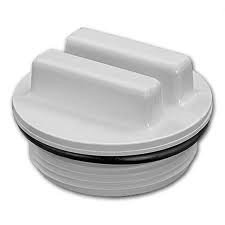
So that time of year is approaching, the nights are getting cooler, the wind is blowing a little brisker and kids are gearing up to go back to school. This all means one sad truth in the North East its time to think about closing the pool.
Now some of us may have pool heaters that will extend our season deep into October or even November but for many once the kids are back to school and starting up sports the pool gets little use after Labor Day. So when you that time comes what kinds of things need to happen in order for your in-ground pool to be closed properly for the winter? What items and chemicals do you need? Should you have a professional close it or can you do it yourself? All good questions and I intend on answering them in this post below.
Pool Closing Preparations:
We always say the cleaner you close the pool the cleaner it will open, but closing a pool clean is just the beginning. A lot of people think because they are going to close the pool for the winter that they no longer need to worry about water chemistry, well this is false.
When preparing the pool we obviously want to make sure we scoop out any leaves, brush the walls and vacuum up any dirt and debris, you should basically want to jump in and take a swim right before you close. Another step we want to take is to test the water balance chemistry for accurate Ph, Total Alkalinity, Calcium Hardness, and Chlorine. The more balanced the water at closing the better condition it will be on opening. Water balance has such a great affect on how well your sanitizers work and thus can keep the water clearer longer after shut-down.
Should I Close the Pool Myself or Hire a Professional?
Can you close your in-ground pool yourself? Sure, if you’re handy it is certainly something that you can do yourself. However, when my customers ask me this question it is usually regarding saving money on the pool and if they are going to save I say, open the pool yourself but have us close it. Why? Because we are dealing with water, ice, and plastic plumbing, and if not done properly it can have severe consequences. When we close an in-ground pool in Massachusetts or New Hampshire we are subjecting that pool to temperatures over the winter that get well below freezing and we need to prepare it properly. Look at it this way, the pool professional is the last person to touch your pool lines and equipment before the winter cold, if it is not done properly and freeze damages the underground lines or pool equipment they will more than likely back up their work and fix it for you, at least any good company will. If you close it yourself you don’t really have that safety net.
What do I need to close my in-ground pool?
When setting up for a pool closing there are a few items and tools you should have on hand. First I want to lay out what you should have available if you hire a pool service company to close your pool.
If You Hire a Service Company:
- Outside power for the service companies air compressors
- Outside water to clean the filter
- All your return plugs and skimmer gizmos from previous years closing
- You pool cover out or accessible
- Access to pump timer/breaker
If You are Closing Your Pool Yourself:

- Shop vac or air blower
- Pipe grips
- Safety cover installation rod
- 1 ½” threaded return plugs with o-ring preferably the Hayward Sp1022 plug one for each return jet
- Return eyeball removal tool
- Skimmer blow out gizmo
- At least 4 gallons of shock
- 1 non-metallic algaecide
- 1 Stain and Scale or Metal Remover
- 1 gallon of anti-freeze for each skimmer and 1 for the return lines
In-ground Pool Closing Steps:
Alright so you are going to close the pool yourself, what’s next? First off like we said before we want to close the pool clean and balanced. Get your pool vacuumed, test the water and balance accordingly. Make sure you add a good amount of shock preferably 4 gallons to raise the chlorine nice and high. Once that is done it is on to the pool closing procedure:
1. Remove all eyeball return fittings. Sometimes they will thread out by hand other times you will need an eyeball removal tool to thread out the back end.
2. Thread in blow out gizmo into skimmer/s Remove the skimmer basket and thread in the blow out gizmo you should be using some Teflon plumbers tape on the threads t help it seal.
3. Next we need to blow out the skimmer lines. Using a shop-vac or air blower the best way to blow the skimmers is from the pump back through the skimmer. You should see the water shootout of the top of the blow out gizmo and keep blowing it out until only misty air comes out.

Blowout gizzmo
4. Blow out the main drain. While you are at the front of the pump turn the valve to the main drain position and blow air through the line until you see the main drain bubbling. Once it is bubbling up pretty good slam the valve closed and it will trap all the air in the line keeping the water out.
5. Blow out the return lines. This is sometimes easier with two people. One person holding the shop vac or air blower and the other plugging the lines. The best place to blow from is the filter. Undo the union at the filter that goes to your return lines back into the pool and blow out through that pipe. You should see the jets start bubbling with air, go to the jet that has the most bubbling, this is the first return in the sequence. As the air is bubbling out of the return thread in the 1 ½” plug until no air bubbles are coming out. Sometimes hand tight is good enough other times a screwdriver may be needed to apply leverage and turn the 1022 plug a little more until it seals correctly.
6. Next you want to make sure you get a little anti freeze in the blown out lines. Pour one gallon into each skimmer via the top of the blow out gizmo. Then if you can funnel some antifreeze down the return lines add a gallon there as well.
7. Once all the lines are taken care of it is time to winterize the pool equipment. If you have a DE or cartridge filter remove the filter element and hose it down clean. At this time you may choose to acid wash the filter element before putting it away for the winter.
8. Next remove any drain caps and drain plugs on the filter and the pump basket and let out all the water from the equipment. The filter tank and the pump basket should be empty.
9. Finally install your safety cover or put on your water bag style cover and you are good to go!
Now as you can see there is a lot to a pool closing and some of these steps really require their own blog post and I will do my best to go into more detail in the coming days and weeks. For now if you have any questions on the closing process you can leave a comment below or email me at [email protected]

Comments are closed.